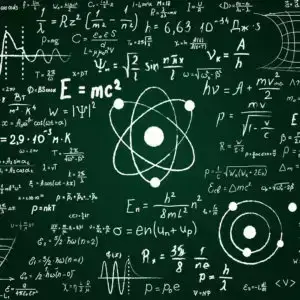Their findings, published in the Journal of Holography Applications in Physics, go beyond simply suggesting that we’re not living in a simulated world like The Matrix. They prove something far more profound: the universe is built on a type of understanding that exists beyond the reach of any algorithm.



I genuinely was not intending to ‘bait’ you. You presented an argument saying your knowledge of the subject is more robust than the experts who refereed the paper. Since I am not an expert in the subject and am curious about learning more, I was asking you to guide me in that process with your experience.
I felt that your arguments suggesting that the author is presenting an inconsistent logical proof were not well defended and so I asked for clarification on the points you raised. I am still unclear what you are saying in this statement:
These are the four criteria that establish how a computational theory is logically defined as a formal system, not an argument. The author makes this clear in addressing the notation being used:
After that paragraph the author uses several very specific examples in modern physics theory describing how the findings apply starting with the paragraph:
Again, I am trying to approach the authors bold claims with skepticism and scrutiny, not argue with you. But you have to be a little more humble, the paper wasn’t published in order to convince you. Just because you weren’t convinced doesn’t mean that the proof is invalid.
Actually, F_QG is itself an assumption which isn’t backed up. See the paragraph before the one you quote when defining it. The beauty of axioms is that we can assume whatever we want but we need to either show nothing goes underneath it (eg Peano axioms) or have a very compelling case to make them (eg non-Euclidean geometry like parallel lines meet at infinity). This is a metasumary of some similar research at best. It’s not a proof in the way you think it is. Just because you don’t understand what you’re responding to doesn’t mean you’re right.
Thanks for responding! I never meant to claim that I am right. The whole purpose I am engaged in here is that I do not understand the proof at all and am trying to understand it better.
Here is where F_QG is introduced in the proof:
Is this not just saying that it is the existing theories (string theory, LQG, etc.) that are assuming gravity takes the form of a formal computational system? And so, F_QG as it is defined above is how any formal computational system is logically constructed, as in it has to have those three components in order to logically be a formal computational system?
I am not a logician and do not understand what a first-order language is, or closed sentences or all those logic terms in the definition of notation. However, is F_QG in this case not just logically how any theory would need to be constructed in order to logically be a formal computational system? Is there an assumption being made here with regard to those three components in how formal systems are logically constructed?
You’re missing the initial step.
Both OP commenter and myself take umbrage with #1 (if I can speak for them; they make disagree with me). I assume that if we trace the sources for the letter that we’ll see the reasons we’re able to make all of these logical leaps using other results in the field that come out of these proposals. I also assume that, if one of these systems is the foundation for a fully consistent theory of quantum gravity, then its conclusions are valid. This paper doesn’t address that initial assumption though so things like the article summarizing it are begging the question.
There are many situations where we just have to agree to assume. If you read 14 and 36, you’ll find some of the core assumptions that go into this letter (both interesting ideas and the same authors so you can understand why they’d continue). An assumption Faisal makes is the rejection of objective observability which is one of those things you either believe or don’t believe. It’s analogous to the axiom of choice in that it could be contested but could be generally accepted.
Thank you, this is helping. However, I am still not following your logic here, I do not know what you are referring to when you say I am missing the initial step?
Is this the initial step? And if so, what are the proposals that are being assumed?
I have read through the abstracts and fail to see a connection regarding assumptions in those papers and the assumptions in this proof. Can you please clarify further for me? What are the specific assumptions being made in these papers that are also being made in the proof?
There are several different interpretations of quantum mechanics. There are very valid arguments in favor of and against every one of them. If you accept one interpretation over an other, would that not just imply you believe that the arguments in favor of that particular interpretation are more logically valid than the other arguments? And so, it follows that you would continue that line of logical reasoning in further interpretations of theory?
I don’t understand how favoring objective collapse theory over objective observability is in any way making assumptions about how formal computational systems are logically constructed.